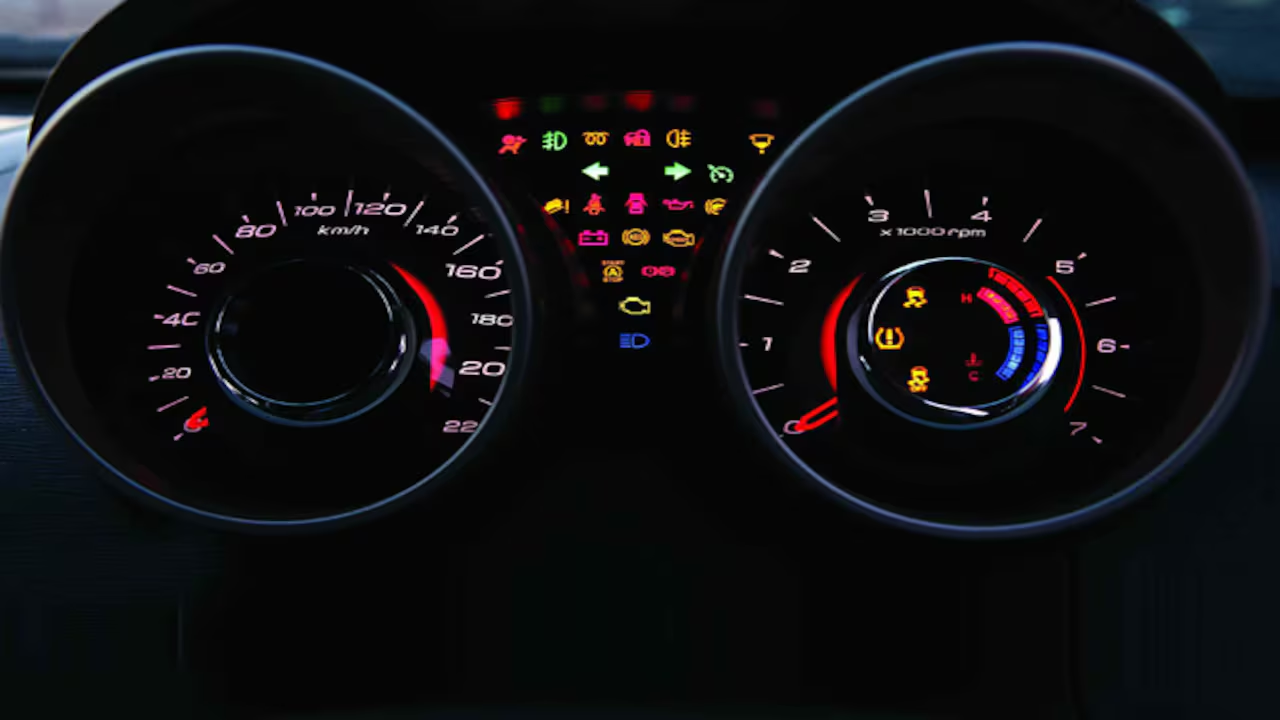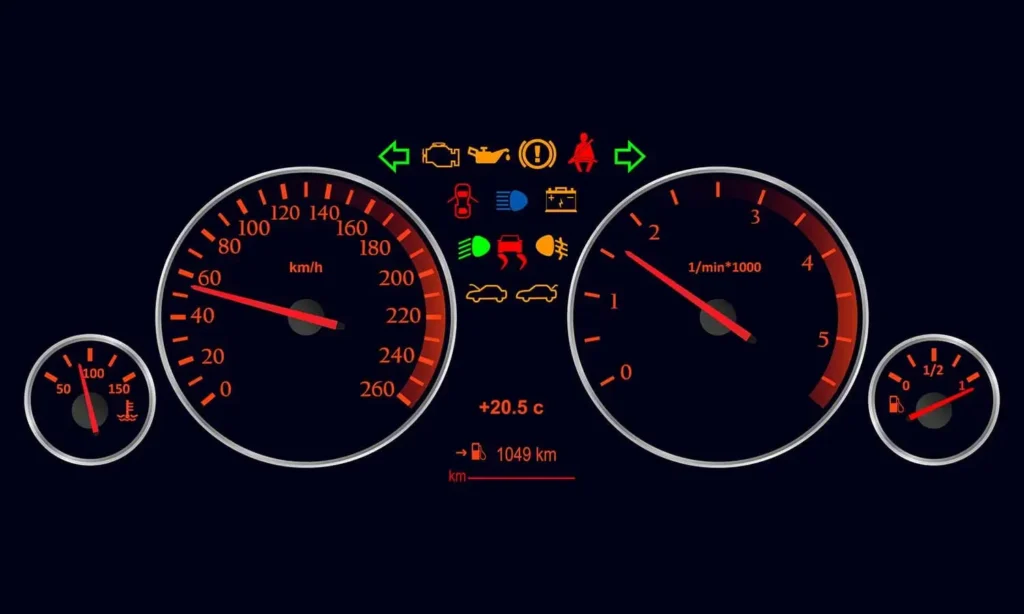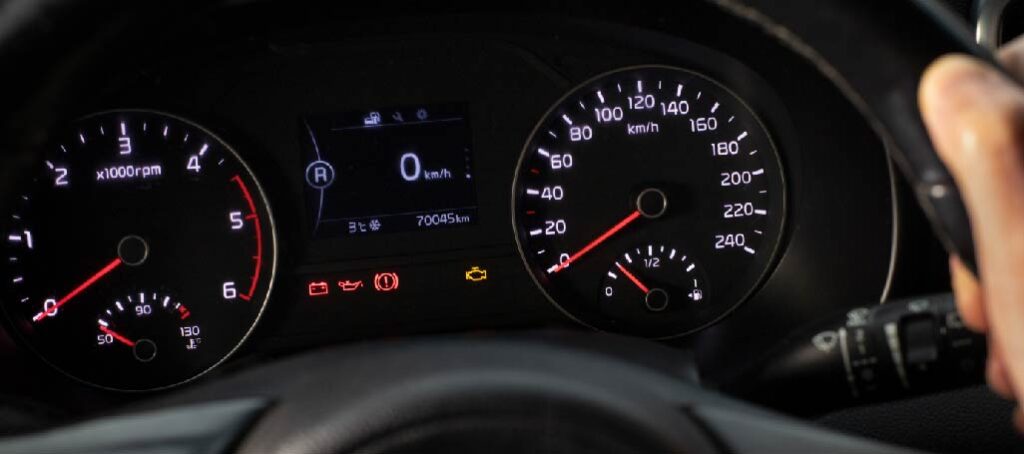📖 Table of Content:
Modern vehicles are equipped with a range of telltale indicator lamps, often referred to as dashboard warning lights. These symbols play a vital role in providing real-time information about your vehicle’s condition and alerting you to potential issues. Knowing what these lights mean and how to respond can ensure your vehicle’s optimal performance and safety.
What Are Telltale Indicator Lamps?
Telltale indicator lamps are the illuminated symbols that appear on your car’s dashboard. They notify you of various operational statuses or potential malfunctions in your vehicle’s systems. These indicators range from routine notifications, like an active turn signal, to critical alerts, such as low oil pressure.
Common Telltale Indicator Lamps and Their Meanings
1. Check Engine Light
This amber light signals a problem within the engine or emissions system. Ignoring it can lead to significant mechanical issues, so timely diagnostics are crucial.
2. Oil Pressure Warning
Shaped like an oil can, this red light indicates low oil pressure. Immediate attention is necessary to avoid severe engine damage.
3. Battery Charge Warning
This light appears when there is an issue with the vehicle’s charging system, such as a failing alternator or battery.
4. Brake System Warning
This red light could indicate low brake fluid levels or a malfunction in the braking system, which must be addressed immediately.
5. Tire Pressure Monitoring System (TPMS) Light
This symbol alerts you to low tire pressure, which can affect handling and fuel efficiency. Regular tire checks are recommended.
6. Airbag Warning Light
When this light is on, it signifies a problem with the airbag system, potentially preventing the airbags from deploying in an accident.
7. Coolant Temperature Warning
This red or amber light warns of an overheating engine. Addressing this promptly can prevent costly engine repairs.
Color Coding of Telltale Lamps
The color of a telltale lamp provides a clear indication of the issue’s severity:
- Red: Immediate action required; signals a critical problem.
- Amber/Yellow: Cautionary alert; attend to it soon.
- Green/Blue: Informational; no immediate action needed.
How to Respond to Telltale Indicator Lamps
For Red Lights:
- Safely pull over and inspect the issue immediately. Continuing to drive may result in severe damage or safety risks.
For Amber Lights:
- Schedule a service appointment at the earliest convenience. These lights warn of potential issues that can escalate if ignored.
For Green/Blue Lights:
- These lights indicate that a system is active or functioning normally. No action is required unless they behave unexpectedly.
Tips for Staying on Top of Dashboard Warning Lights
- Familiarize Yourself with the Symbols: Refer to your vehicle’s manual to understand the specific indicators in your car.
- Perform Regular Maintenance: Routine servicing can prevent many issues before they trigger warning lights.
- Use Diagnostic Tools: If a warning light appears, a handheld diagnostic tool can provide more details about the issue.
FAQs About Telltale Indicator Lamps
1. What is a telltale indicator lamp?
A telltale indicator lamp is a symbol on a vehicle’s dashboard that provides information about the status of various systems or alerts the driver to potential issues. These lights can signal normal operations, such as turn signals, or warnings, such as engine malfunctions.
2. Why is the check engine light on?
The check engine light can illuminate for various reasons, including issues with the engine, emissions system, or sensors. It’s essential to have the problem diagnosed promptly to prevent further damage.
3. What does a red telltale light mean?
A red telltale light indicates a critical issue that requires immediate attention. Examples include the brake system warning, oil pressure warning, or coolant temperature warning.
4. Are amber or yellow lights less serious than red lights?
Amber or yellow lights signify cautionary alerts, such as low tire pressure or a malfunction in a system that doesn’t pose an immediate safety risk. However, these issues should still be addressed soon to avoid complications.
5. What does the battery indicator light mean?
The battery indicator light signals a problem with the vehicle’s charging system, such as a failing alternator, a bad battery, or loose wiring. It’s crucial to address this issue promptly to prevent a complete loss of power.
6. How do I reset a telltale indicator lamp?
Resetting a warning light often involves resolving the underlying issue, such as topping off fluids, replacing faulty components, or repairing the system. Some vehicles require diagnostic tools to reset lights after repairs.
7. Can I drive with a telltale light on?
It depends on the light. Green or blue lights indicate normal operation, while amber lights suggest caution but are usually safe to drive temporarily. Red lights require immediate attention, and it’s advisable to stop driving until the issue is resolved.
8. Why does my tire pressure monitoring system (TPMS) light keep turning on?
The TPMS light indicates low tire pressure. This could result from temperature changes, a puncture, or a slow leak. Check your tire pressure regularly and inflate tires to the recommended levels.
9. What does the airbag warning light mean?
The airbag warning light signals a malfunction in the airbag system. If this light is on, airbags may not deploy in an accident, so the system should be inspected by a professional immediately.
10. How can I prevent telltale indicator lamps from activating?
Regular maintenance is the best way to prevent warning lights. Schedule routine check-ups, monitor fluid levels, and promptly address minor issues before they escalate.
11. What does the coolant temperature warning light mean?
This light indicates that the engine is overheating, which could be due to low coolant levels, a faulty radiator, or a failing thermostat. Stop driving immediately and inspect the cooling system.
12. Can weather conditions trigger telltale lights?
Yes, extreme temperatures can affect systems like the battery, tire pressure, and sensors, potentially triggering warning lights. Monitoring your vehicle’s condition in these situations is essential
13. Do all cars have the same telltale indicator lamps?
While many warning lights are standardized, some symbols and colors may vary by manufacturer. Always refer to your vehicle’s manual for specific information.
14. How do I identify an unfamiliar telltale lamp?
If a light appears that you don’t recognize, consult your vehicle’s owner manual or use a diagnostic tool to identify the issue. Some apps and online resources can also provide quick symbol interpretations.
15. Can ignoring telltale indicator lamps cause serious problems?
Yes, ignoring these lights can lead to major mechanical failures, increased repair costs, and safety risks. Always address warning lights promptly to ensure your vehicle operates safely and efficiently.
Conclusion
Telltale indicator lamps are an essential part of modern vehicles, helping drivers maintain safety and performance. Understanding their meanings and responding appropriately can save time, money, and unnecessary stress. Keep your vehicle’s manual handy and stay proactive about maintenance to ensure a smooth driving experience.




